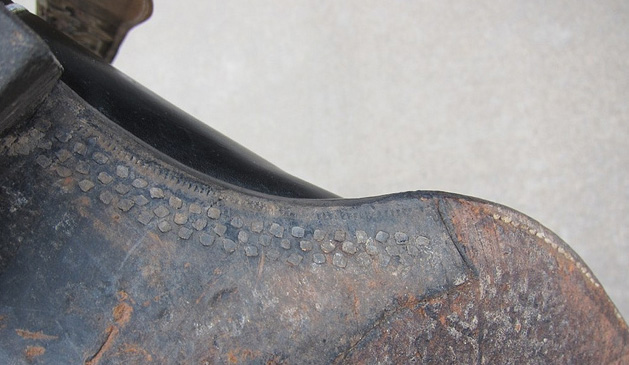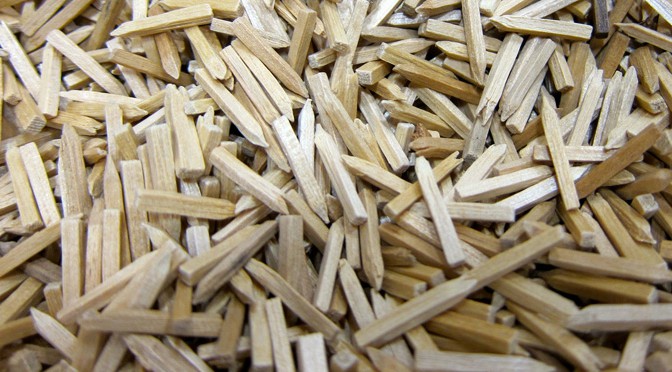So, do you want to know a secret? Sometimes I go into western wear stores just to see what boots they have sitting on the shelf…and when I do, I do what everybody else does and I pick up a boot and turn it over. I look for the pegs. The pegs are hammered into the sole of the boot and they run along the underside of your foot’s arch and under the boot’s heel where you can’t see ’em.
Only I don’t stop there…oh, nooo…not me. Then I take my thumbnail and scratch the layer of black wax off the top of the pegs, and double check something. Most of the “pegged” shelf-boots are now using these kinda rectangular peg-shaped brass nails instead of the traditional wooden pegs. Ugh. The beauty of the wooden peg is that it absorbs water and swells along with the sole of the boot when it gets wet. Yeah sure, today’s glues are strong enough to outlast any leather or stitch…but that’s not the point. When I see a row of wooden pegs I see craftmanship and skill. For every peg on a boot’s sole an awl is dipped in wax, a hole is punched, and a peg is hammered in…and the magical thing is that the hole you punch with your awl is round and significantly smaller than your peg. Square peg into a round hole…get it? You do it wrong and your peg goes halfway into your leather sole and snaps off at an angle. Experienced bootmakers have a special hammer, one with a textured face to grip the peg, and the hammer is set into a rhythmic motion…one light tap to set the peg in place…then a harder one to drive it in….over and over.
Big bootcompanies like using brass nails because they are fast and foolproof. If they can make a boot faster, it’s the same as making it cheaper. I understand this. I just don’t like it when they are square…it’s misleading. People have learned to turn a boot over and to “look for the pegs”…like thumping a melon in the grocery store.
Yeah…go ahead look for the pegs, but bring your reading glasses.



